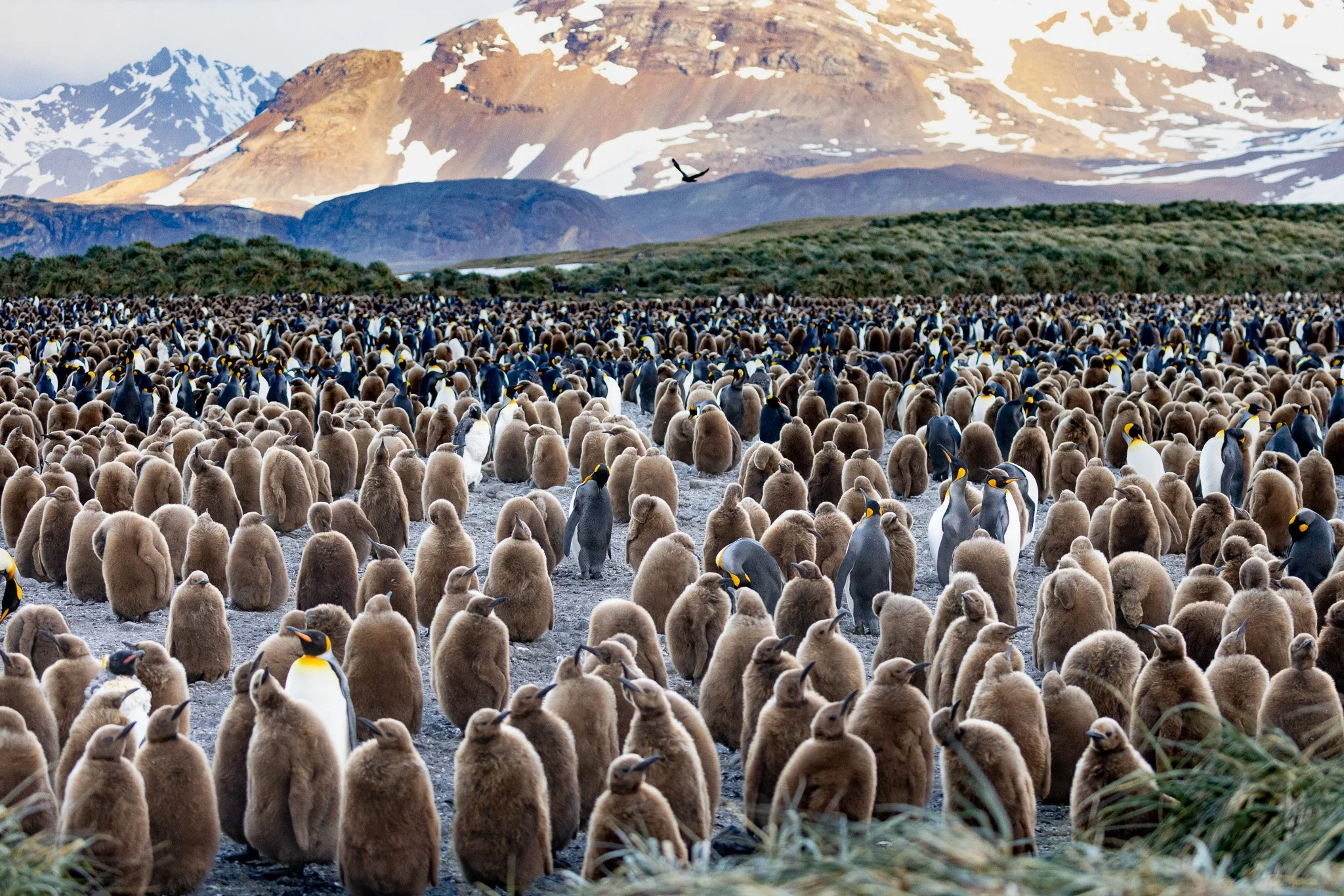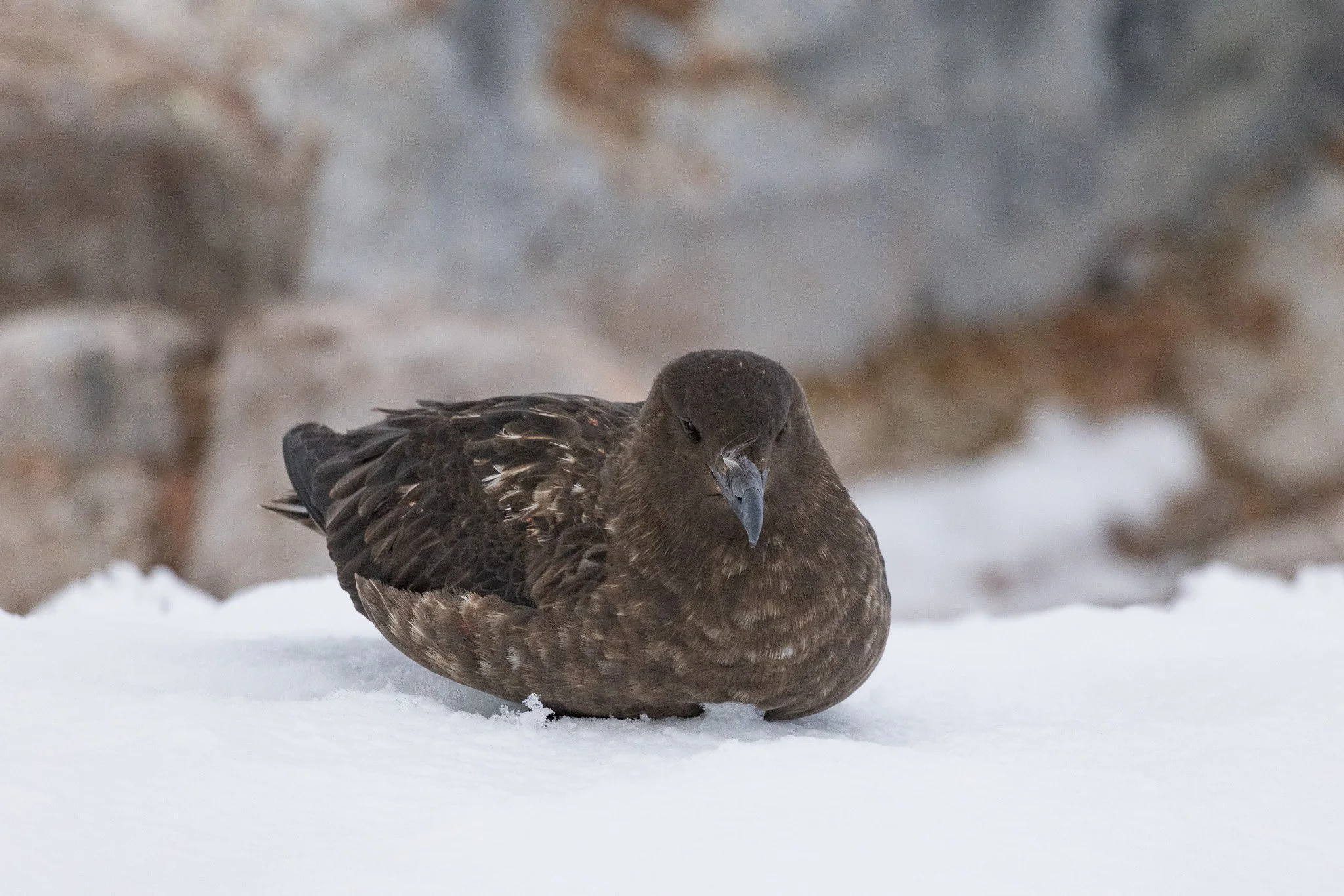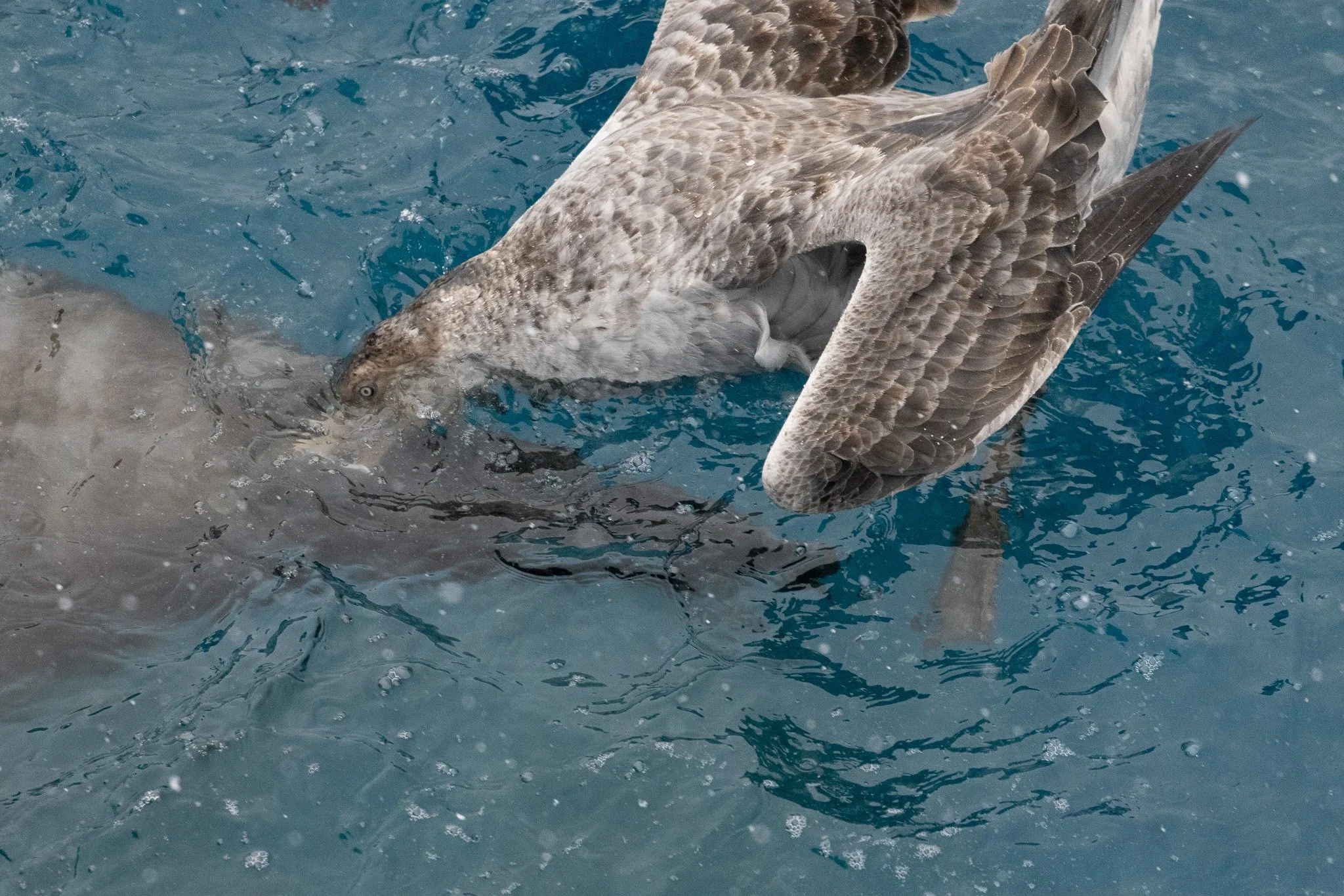Flu Season in the Antarctic - Part 1
By Safina Center Fellow Katlyn Taylor
Salisbury Plain, South Georgia – we only landed here once the whole season. ©Katlyn Taylor
This year the Southern Ocean travel industry had a new challenge to contend with: avian influenza. After a rapid journey through South America over the course of only six months, H5N1 was on the verge of crossing the Southern Ocean to places like Antarctica, South Georgia, and the Falkland Islands. In preparation, we were given new protocols and trainings to help us make the best out of the situation.
How do you operate in a way that prevents the spread of a pandemic in wildlife? Since we humans had just batted with our own pandemic in the years prior, the idea of protocols to prevent disease spread were not unfamiliar to travelers. Of course, we can’t ask hundreds of thousands of penguins to wear masks and we can’t restrict the migratory travel of seabirds. So, we did the best we could to minimize our impact and risk.
Skuas were one of the species to bring avian flu to new areas. ©Katlyn Taylor
What did this look like? We minimized our potential for contaminated surfaces by not allowing for sitting, kneeling or crouching too low while on shore. We used tarps or bags that could be easily cleaned with sanitizing solutions to stow gear or anchored our zodiacs with gear in them at our landing sites. Staff spent extra time scouting and monitoring wildlife before allowing guests ashore.
I was on one of the first ships to travel to South Georgia for the 2023-2024 season. We were nervous. Avian flu had the potential to wipe out entire bird colonies. The last thing we wanted to see was thousands of king penguins laying on their backs when we got there.
The first trip of the season went well. We adjusted to our new protocols and routines easily, however there were some early warning signs that trouble may be right behind us as we worked our way south on the leeward side of South Georgia. We saw some dead animals at a few sites, but nothing above the normal levels for breeding colonies with such high densities of wildlife. We couldn’t help but wonder if it was natural or not.
A Southern elephant seal pup nursing from its mom, just hours after birth – King Edward Point, South Georgia. ©Katlyn Taylor
Avian flu spreads quickly and affects mammals in addition to birds. Ships just a few days behind us witnessed mass mortality in elephant seals, particularly pups. Photos and videos started to circulate among operators of dead and dying seals and flighted seabirds. Positive cases started to be detected by labs and sites began to close.
A giant petrel scavenges an elephant seal pup carcass at Gold Harbor – this site experienced mass mortality just days after this photo was taken. ©Katlyn Taylor
Just two weeks later when I returned for my second trip of the season, half of South Georgia landing sites were closed. This trend continued for the rest of the season. For a while, sites closed and reopened, but by the end of January almost every landing site on the island was closed. Cases were reported in the South Shetland Islands but didn’t result in long term closures. It was a sign of the virus coming South and West. By the end of my season in March, cases had been reported and sites has been closed South of the Antarctic Circle.
King penguins walk amongst elephant seals at Right Whale Bay, South Georgia. ©Katlyn Taylor
This is part one of a two-part series of articles. If you’d like to hear more about the spread of avian flu in the southern ocean, Katlyn Taylor discussed many of the issues she’s witnessed as they’ve developed on her podcast, the Whalenerds.





